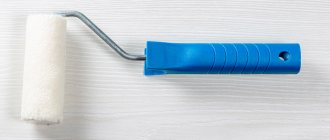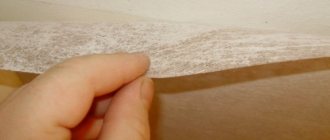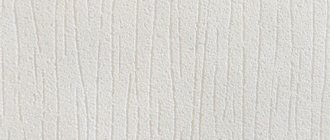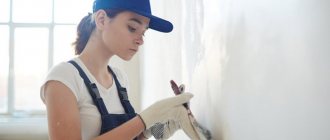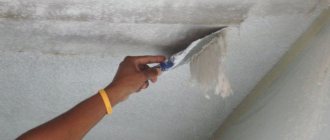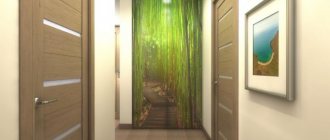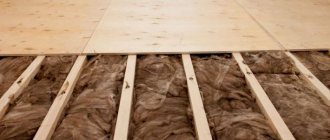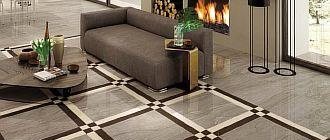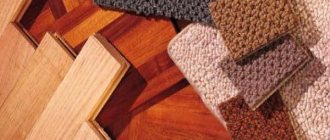On our website you can find out the main differences between fiberglass and wall wallpaper.
Today, many different coatings are used to decorate ceilings and walls. Particular attention of buyers is attracted by materials that combine decorativeness and functionality. One of these is fiberglass fabrics. They are presented on the market with fiberglass and glass wallpaper. The well-known manufacturer Vitrulan offers customers a wide range of coatings.
Many potential buyers of materials are wondering: what is the difference between glass wallpaper and fiberglass, are these canvases interchangeable? The coatings presented by the manufacturer have technical and functional differences. This determines their purpose and, accordingly, their use during repair work.
Features of fiberglass
Fiberglass is a rolled finishing material , for the production of which glass fiber threads are used in a chaotic weave. To obtain it, glass is melted and thin threads are pulled out. Thanks to special starch impregnation, the hardness and wear resistance of dusty glass fragments are increased. Fiberglass wallpaper is considered safe during installation and use.
For the production of fiberglass, special equipment is used, which makes it possible to give the canvas different densities and any decorative image. Among the assortment of glass wallpaper there are:
- Cobweb-shaped specimens.
- Diamond weave.
- Square images.
- With a combination of different shapes and textures.
From a wide variety of products, you can choose wallpaper of a suitable texture, depending on the design and overall style of the room.
Disadvantages of glass wallpaper
It would be completely wrong to talk only about the advantages of glass wallpaper. After all, this material has its own application features and disadvantages that limit the possibility of use in specific conditions. The disadvantages of glass wallpaper include:
- Lack of flexibility. The material does not withstand bending loads well. In particular, if you glue canvases to curved walls with large depressions and defects, the result may be the appearance of cracks and loss of presentability. In view of this, glass wallpaper should be used exclusively on leveled substrates with a small number of defects.
- Porosity. The presence of a porous structure is both an advantage and a disadvantage of glass wallpaper. On the one hand, this property allows the walls to “breathe”, but on the other hand, it increases paint consumption. The applied paint penetrates well into the porous structure, due to which the first painting requires the use of copious amounts of paint and varnish. This, in turn, results in additional budget expenditure.
- Heavy weight. Fiberglass wallpaper itself is heavy, which can negatively affect the quality of use. The mass of the material is also increased by a layer of paint and glue used to fix the paintings on the walls. Together they create a large load on the base. For this reason, glass wallpaper is not suitable for loose substrates, inclined surfaces and ceilings. For the same reason, it is not recommended to repaint glass wallpaper many times.
- Difficult to dismantle. After gluing and drying the glue, sometimes you have to tear off the glass wallpaper, as they say “alive” - along with the plaster.
- Loss of decorative effect when re-painted. Textured glass wallpaper has a slightly pronounced relief. Each subsequent painting will lead to a deterioration in the visual effect of the decor.
- High price. Fiberglass wallpaper itself is an expensive product. Along with the need for a large consumption of paint, carrying out repairs with such material can cost a pretty penny.
Features of non-woven wallpaper
Non-woven wallpaper for painting is a rolled finishing material based on non-woven fibers . Non-woven fabric is half synthetic material; natural cellulose and artificial polymer polyester are used for its production. This gives the product strength, elasticity, and flexibility.
Paintable wallpapers have different densities and decorative functions. They are produced in the form:
- Painting non-woven fabric.
- Paintable wallpaper made from non-woven fibers.
For the production of painting non-woven fabric, pure non-woven fibers with a random weave . It is similar to a cobweb; they are effective for finishing walls and ceilings. The applied paint does not emphasize the relief of the canvas.
Non-woven wallpaper is similar to vinyl products. The lining is a thick non-woven fabric with a decorative foam vinyl layer applied. The wallpaper is given relief and texture thanks to stencils. This expands the decorative functions of the material and is suitable for decorating residential and office spaces.
Manufacturers
Fiberglass for ceilings is produced by different manufacturers in rolls 1 m wide. The most popular are the following:
- Wellton is a company from Finland. The glass fiber produced by it tolerates staining well;
- Oskar is a company from Russia that produces durable and affordable materials;
- Nortex is a manufacturer from China. Its products attract with low prices and good quality;
- Spectrum is a brand from Holland.
As for the cost, the price of cobweb depends on its density. The cheapest materials are offered by China - 600 rubles per roll with a density of 50 g/m², the most expensive - Wellton (1065 rubles per roll of web with a density of 45 g/m²).
All materials produced by the above brands are produced using standard technology, so their properties are almost identical to each other. Whom to give preference is up to you to decide.
Differences and common features of fiberglass and wallpaper
You can understand the difference between both materials using the table below.
| Differences | Common features | |
| Wallpaper | 1. They weigh little. Due to its lightness, wallpaper does not load the wall. They are used to decorate loose, porous bases, arched passages, and ceilings. 2. Flexible, elastic. Non-woven fibers allow you to take the shape of a wall surface and are suitable for masking defects. There is no risk that the fabric will tear or become deformed. 3. Ease of installation. Wallpaper is easier to glue - this reduces the labor intensity of repair work. 4. Can be repainted many times. After dyeing, the relief of the material is preserved. 5. High strength, suitable for wall reinforcement, prevent cracking. 6. They are distinguished by their pronounced decorativeness, texture, and relief. 7. Characterized by low chemical resistance. When exposed to aggressive substances such as alkalis, acids, the material is destroyed. | 1. Both materials are moisture resistant. They do not lose their properties even with high humidity and contact with water. They are allowed to be washed using a damp washcloth. 2. Fiberglass and wallpaper are characterized by increased vapor permeability, allowing steam and air to pass through. 3. Materials are expensive. Fiberglass absorbs a large amount of paint. |
| Fiberglass | 1. Wallpaper made from fiberglass is characterized by chemical inertness. The fabric does not emit harmful substances, does not smell and is not saturated with odors. The material is resistant to acid, alkali, and fat. You can clean fiberglass from dirt with a soap solution. 2. Fiberglass is biologically resistant - various bacteria, fungi, and molds do not grow in it. 3. Wallpaper made of fiberglass does not absorb moisture and does not deform when in contact with water. 4. They are fireproof, do not burn, do not smoke when struck by a fiery flame. 5. Due to the porous structure of glass fibers, they form gaps through which steam passes. This does not interfere with the “breathing” of the walls and does not form condensation. 6. Fiberglass retains its attractive appearance and properties for several decades. It is important to remember that the texture of the wallpaper is poorly expressed. With repeated staining, the visual effect worsens. 7. Fiberglass fabric is not flexible; gluing curved walls is fraught with the formation of depressions, defects, and cracks. |
Of all types of wallpaper, products made from fiberglass have the greatest strength . Intertwined and impregnated with a special solution, glass fibers are resistant to stress, they do not rub, tear, or scratch. But at the same time, they are difficult to dismantle - they are torn off along with the layer of plaster.
Application for decorative finishing
Fiberglass can be painted or coated with other materials only after it has completely dried. If the paint is applied directly to the fiberglass, the web structure will show through the finish. But this technique will give the surface an original look.
To obtain a perfectly flat base, you will need to first level the fiberglass with a layer of putty.
Typically, dry mixtures are used for work, which are stirred in water until the desired consistency is obtained. Apply the composition in a thin layer, not exceeding 1.5-2 mm, using a spatula.
Next, the surface is grouted, but before that you need to make sure that the material is completely dry. The work is carried out with a special grater or grinding machine, where abrasive paper is attached.
Important! If two or more layers of putty are to be applied, each layer must dry well. Moreover, the next layer must be applied to the surface no earlier than 12 hours after applying the previous one.
What to choose for painting – fiberglass or wallpaper?
Before gluing the rolled finishing material, it is important to assess the condition of the room , to understand whether the walls or ceiling are even. If there are serious defects, it is better to give preference to non-woven wallpaper for painting. Fiberglass is glued onto the leveled surfaces.
It is important to pay attention to the state of the external environment in the room . Non-woven wallpaper, despite its resistance to moisture, deteriorates over time and peels off with constant contact with moisture. Glass wallpaper is used to cover kitchens, corridors, and balconies.
In terms of decorative function, wallpaper made of non-woven or vinyl is the leader. They are distinguished by a wide variety of textures and reliefs. Fiberglass is presented mainly in the form of geometric shapes.
Due to the heaviness of glass fiber, it is not suitable for gluing ceilings. With frequent mechanical stress, the wallpaper peels off and tears. They are used to decorate private houses and apartments; it is not advisable to use them in an office or administrative/public building.
Repair and constructionComment
Technical nuances of using coatings
Do you want to know how to properly glue fiberglass and glass wallpaper? Vitrulan Moscow experts will advise you on the use of technological coatings for functional and functional-decorative purposes.
According to the manufacturer's recommendation, fiberglass sheets can be glued to almost any surface, from plaster to drywall. In the latter case, the materials allow you to hide the seams without much effort. How to glue fiberglass to drywall? The technology is no different from the standard one.
The surface on which the reinforcing web is attached must be cleaned of dust and primed to reduce absorbency. The same applies to preparing a plasterboard base for gluing with fiberglass wallpaper. In both cases, it is recommended to use professional glue. You can purchase the necessary consumables at Vitrulan Moscow.
How to choose painting non-woven fabric
Once you are finally convinced of the need to purchase painting non-woven fabric for painting, you need to select it correctly to the parameters of your house or apartment. Non-woven fabric is an environmentally friendly material and is harmless to use. Therefore, make sure that the seller has all the necessary quality certificates and documents necessary for the sale to ensure the authenticity of the goods. Non-woven fabric must not contain PVC. Just like wallpaper, it allows steam to pass through. It shouldn't stretch. Pay attention to its texture: it should be perfectly smooth and soft, like a baby's skin. Particles of foreign origin should not appear on it. The edges should be smooth. The material itself has increased elasticity: make sure of this. Ask the seller more questions about quality. He must know what he is selling. Study the composition carefully: there should not be any chemical elements unknown to you, because you are purchasing an environmentally friendly product. Painting non-woven fabric consists of cellulose. Don’t think that you can’t choose the right material for painting. You have already made the right choice by agreeing to purchase it for renovations in your home.
What adhesive to use for gluing fiberglass?
If we consider the composition of the glue specifically for this category of wallpaper, then it is made on the basis of starch, with various additives that improve the moisture-resistant qualities of the canvases and antibacterial properties.
Let's look at which adhesive is best for glass wallpaper, and what it comes in:
- In fact, the more expensive the composition, the faster it swells and has better adhesive properties.
- And since glass fibers are much heavier than their paper counterparts, the choice should be made in favor of those that can better hold them on the surface.
Advice. It is better to choose types based on PVA glue or dispersion, they are designed for heavy canvases.
| 1. | Dry mixes. | Most of the adhesive compositions for this material are produced in powder form from adhesive components with antiseptic additives. It has a low specific gravity and is stored for a long time without losing its qualities. |
| 2. | Ready-made adhesive solutions. | This is a completely ready-to-use composition consisting of adhesives and various additives. It goes on sale packaged in containers (plastic buckets) of 5 kg and 10 kg. Shelf life depends on the manufacturer; it can withstand about 5 cycles (freezing/thawing) without losing its quality properties. |
Fiberglass wallpaper is a woven fabric made of glass fibers
Threads are drawn from liquid glass and woven into cloth.
There are two types of glass wallpaper:
The difference between them is only in technology and type of weaving:
- In the first case, the material is similar to ordinary smooth canvas,
- In the second, they are decorated with a certain relief pattern, moreover, they are characterized by greater density than the first.
- Fiberglass is used to strengthen walls and smooth their surfaces.
Note. This procedure is especially often performed in the finishing of ceilings. Here it is easier to glue fiberglass onto its surface than to carry out plastering and putty work.
- The surfaces are perfectly smooth, with a texture reminiscent of marble.
- But they can only look like this if they are painted, and not covered with other wallpaper.
